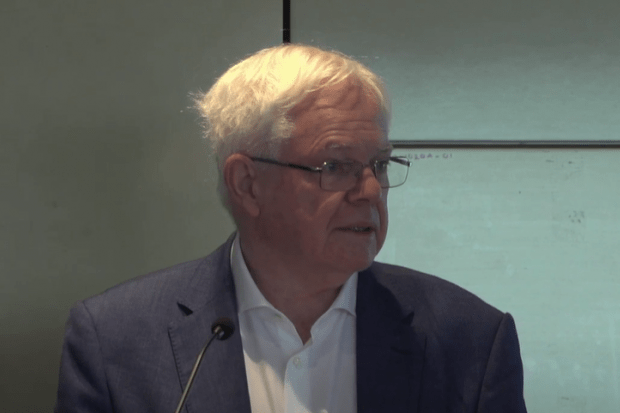The adoption of employability as a “universal measure of value” is forcing “the square peg” of higher education into “a round economic hole”, according to University of Oxford higher education researcher Simon Marginson.
Professor Marginson told a Melbourne symposium that public discussion about higher education overwhelmingly focused on its “extrinsic” role as a provider of occupational qualifications.
This overlooked its “intrinsic” purposes of educating students and disseminating knowledge – the “classical inner core” of higher education, which was about learning and knowledge for their “own sake”.
On the learning side, the primary functions were to help students become socialised, “self-realising” people. But government policy and media discourse focused on extrinsic functions such as preparing students for the professions.
“While the inner intrinsic purposes of higher education can be achieved without the extrinsic applications being brought into the picture, the reverse is not true,” Professor Marginson said. Nevertheless, this was being attempted through initiatives like microcredentials and Australia’s Job-ready Graduates reforms.
“In the UK, the Teaching Excellence Framework sought to evaluate and measure teaching and learning in terms of graduate earnings and student satisfaction,” he told the symposium, hosted by the Melbourne Centre for the Study of Higher Education. “Programmes associated with relatively low average graduate salaries are now highly vulnerable.
“That, of course, includes teaching and nursing. Using graduate salaries as the sole measure of value…means ignoring rationales [such as] self-formation and socialisation and…the public good.”
It also ignored higher education’s limitations. “Efficient training in skills and employability doesn’t occur in higher education; it occurs on the job,” Professor Marginson said. “Even in many occupational courses, transition to the workplace is challenging and takes time – typically three to six months, sometimes longer.
“To press education and work into a single process, either by treating them as essentially the same or subordinating one to the other, is to violate either work or higher education. No prizes for guessing which one is more vulnerable.”
He said employability had become an ideological “mantra” for the sector. “This could be fatal to the cultural practice of higher education…[but] government wants to push an existing system towards this ideal. It’s not going to work.”
Equally problematic was a view of university research as a wealth generator. “Many in government want higher education to focus only on research that industry wants – they see no value in any other kind of knowledge.
“Higher education has many active relations with industry. It conducts applied research, it builds industry capacity by training researchers, and it links to global developments in science and technology. However…universities focus on capacity and performance in science, and are marginal to the capital flows and risk-taking driving innovation in industry.”
Professor Marginson said that while Australian science breakthroughs tended to be commercialised elsewhere, the reverse also applied. “Most…innovations of local industry come from creative sources outside Australia.
“There’s simply no…linear relationship between national science and national innovation. After decades of science policy all this should be obvious.”
He said a longstanding feature of global higher education, originating in the imperial academies of China’s Western Zhou dynasty, faced an existential threat. “Will higher education continue to educate students as self-realising agents via immersion in knowledge, as it has for 3,000 years? Or will it be forced to rely solely for its existence on employability? Will its autonomy and heterogeneity survive? Question mark.”
Register to continue
Why register?
- Registration is free and only takes a moment
- Once registered, you can read 3 articles a month
- Sign up for our newsletter
Subscribe
Or subscribe for unlimited access to:
- Unlimited access to news, views, insights & reviews
- Digital editions
- Digital access to THE’s university and college rankings analysis
Already registered or a current subscriber? Login








